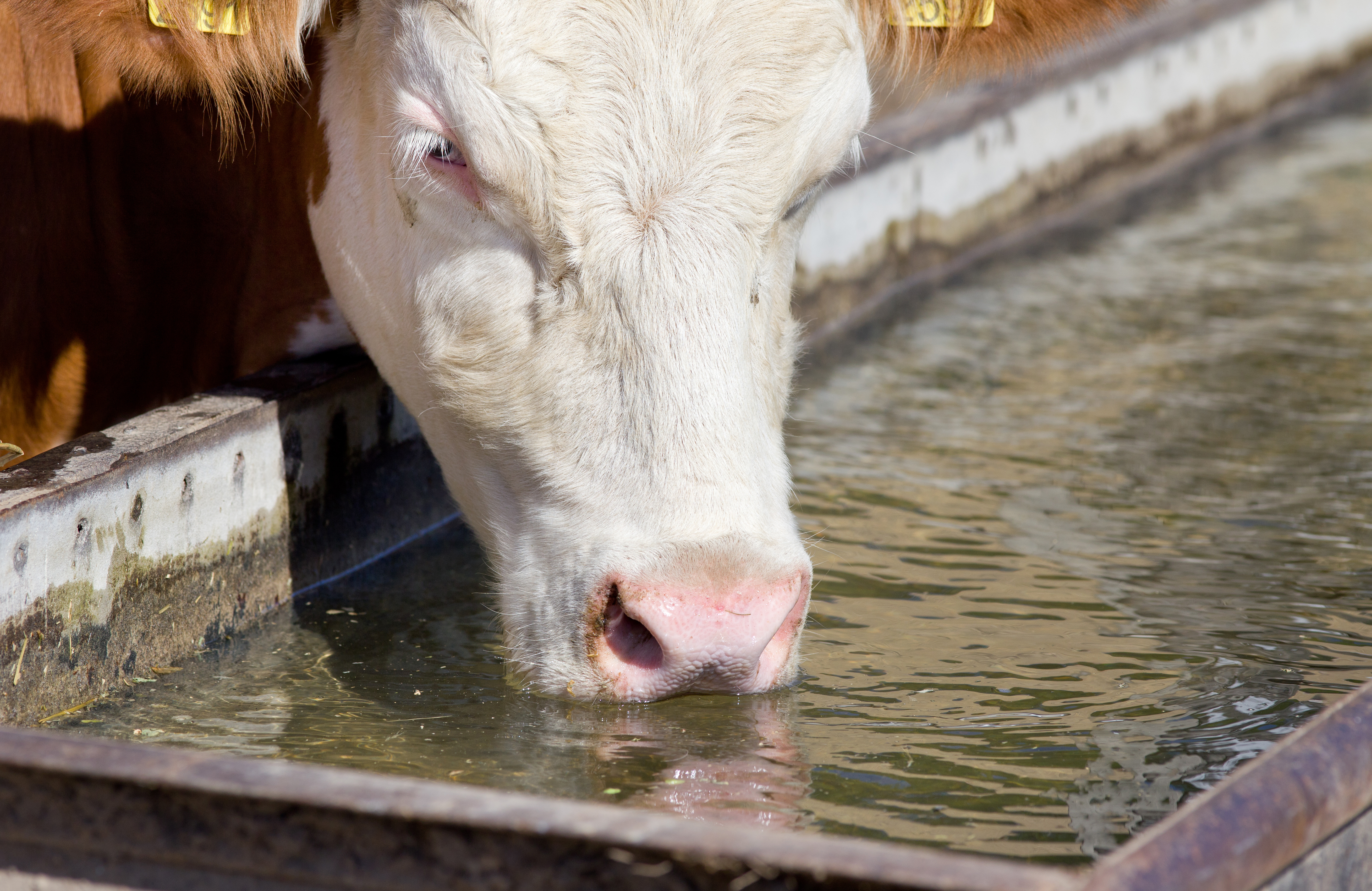



July 06, 2018

The number one problem with your herd’s drinking water, other than not having enough, may be the content of dissolved solids—any minerals, salts, metals, cations or anions dissolved in water.
When total dissolved solids reach a high level, it can cut water intake and therefore consumption of both forage and mineral supplements.
We’ve traditionally thought that summer declines in dry matter consumption happen because it’s hot. But in places with water quality issues, I tend to think the bigger problem may be a lack of water consumption.
Cattle water consumption not only goes up in warmer weather, but it is also locked in a vital relationship with the amount of feed intake cattle typically achieve. Here are some guidelines on how that relationship works when it comes to drinking water for cattle:
When thinking about these numbers, don’t forget that the lushness or dryness of the forage makes a big difference in the amount of water cattle need to drink. For example, lush spring pastures may be up to 80 percent moisture, meaning cattle may need little additional water beyond what they take in from grazing. Later in the summer those forages may be much lower in moisture, and with the added heat cattle may need to drink a lot more water.
This is not an issue of dirty water versus clean water. Your herd’s drinking water can appear clear and still be high in dissolved solids. Instead, it’s more about the mineral interactions.
An excess of one mineral, or a lack of it, can affect the availability of several other minerals in an animal’s body. It can also decrease livestock water consumption by smells not always discernible to the human nose.
The worst offenders are iron, sulfur/sulfates and salts. Sulfates and chlorides are considered salts, and high levels of salts can cause diarrhea and growth problems.
Sulfates also add to the total load of sulfur in the bodies of animals that drink high-sulfate water. Sulfur at levels above 500 parts per million (ppm) in the water may tie up copper and cause problems with hair coat, reproduction, lameness, growth and other functions. When it tops 1,000 ppm, some cattle can show problems with polioencephalomalacia (polio), and that likelihood can increase if levels climb higher.
Excess iron can also be a common issue with livestock water quality. It may show up physically as red coloration in stock tanks or will leave a red stain if you run water out on the ground, let it dry, and then come back the next day. Excess iron absorbed from livestock drinking water can inhibit copper and zinc absorption and lead to a condition called cellular oxidative stress. In all, these conditions can compromise immune function and increase mastitis, the incidence of retained fetal membranes and diarrhea. These conditions can also depress feed intake and impair growth and milk production.
The only way to learn what your herd’s water contains is to send samples to a certified laboratory for testing. You can find certified laboratories by visiting bit.ly/WaterQualityTest.
Specific tolerance levels for a variety of individual contaminants can be found here: bit.ly/WaterTolerance.
Drinking water impacts your herd more than you might think; the importance of water to livestock—quality and quantity—shouldn’t be overlooked. Learn how water plays a role in mineral consumption.
Original article provided by: https://www.purinamills.com/cattle-feed/education/detail/don-t-overlook-livestock-water-quality?utm_source=esubscribers&utm_medium=email&utm_content=heroimage&utm_campaign=cattle_managementtips_may